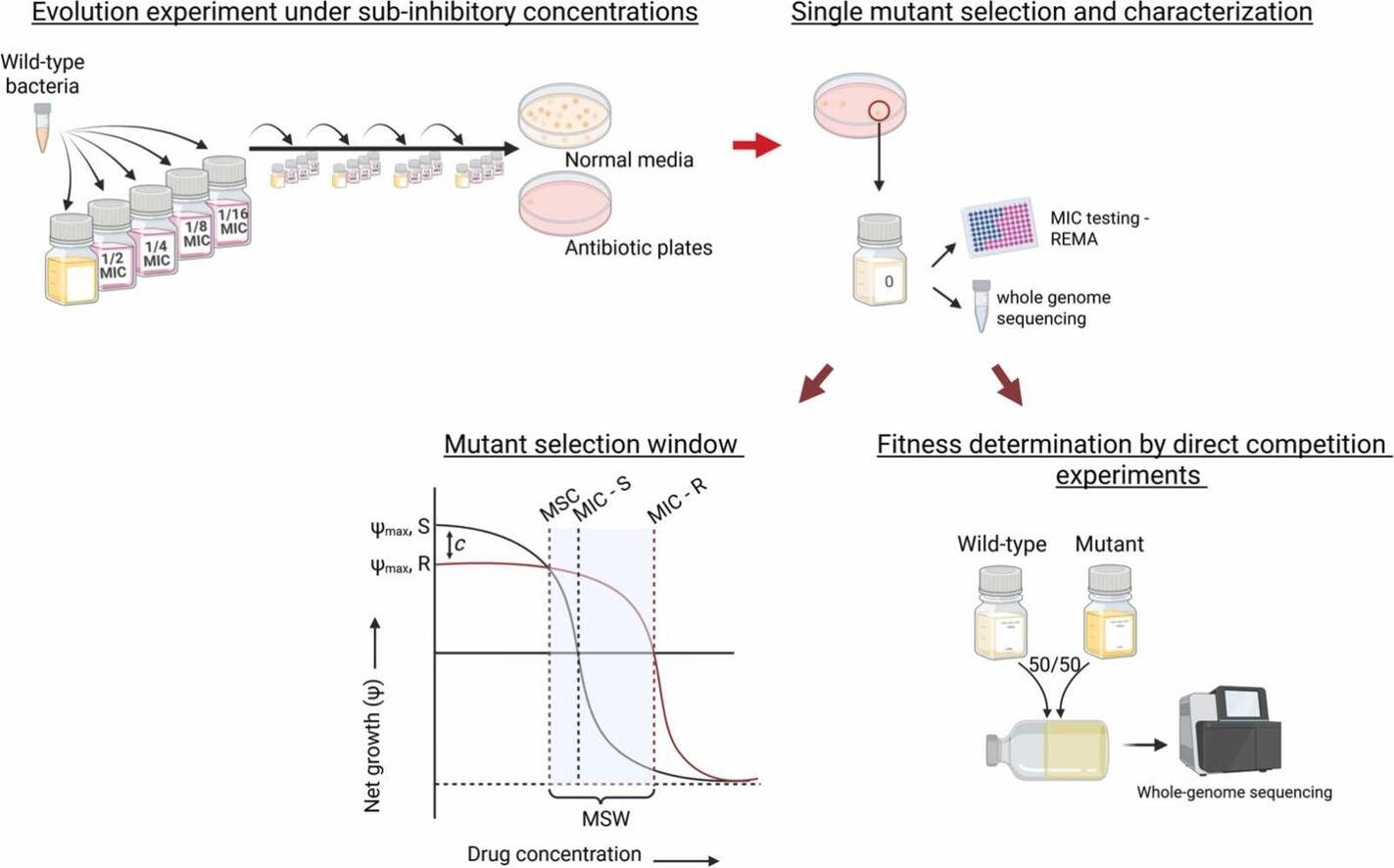07.07.2025
How does resistance develop—and what can be done to preserve Antibiotic effectiveness?
Using laboratory experiments and mathematical calculations, researchers at the FZB have for the first time been able to define the areas in which the development of resistance to two important tuberculosis drugs is favored.
The number of antimicrobial-resistant (AMR) infections continues to rise worldwide. While correct administration of antibiotic regimens is crucial, the right dose and duration of treatment are equally vital to prevent the development of resistance. In diseases such as tuberculosis (TB), treatment is particularly complex. Antibiotics often fail to reach the bacteria at therapeutic concentrations, and the lengthy treatment period—at least six months—creates a prolonged selection pressure, increasing the risk of resistant mutants emerging.
This study focused on Mycobacterium tuberculosis, the bacterium responsible for TB, which already causes around 500,000 cases of drug-resistant bacterial infections globally. Rifampicin-resistant TB, in particular, is classified as a critical priority pathogen by the World Health Organization (WHO).
Researchers from the Research Center Borstel – Leibniz Lung Center and ETH Zurich investigated the "mutant selection window"—the range of drug concentrations that select and proliferate resistance—for two key TB antibiotics: moxifloxacin and bedaquiline. Using a combination of laboratory experiments and mathematical modeling, they identified the concentrations at which these drugs are no longer effective, and the selection of resistant strains is favored.
Their findings, published in the Journal of Infection, reveal that the threshold for resistance development is significantly lower than previously assumed. This threshold is also highly dependent on the duration of drug exposure. Long-term treatment, as simulated mathematically, promotes resistance even at much lower concentrations than short-term treatment, which was demonstrated experimentally.
This can mean that even minor fluctuations in drug levels—due to irregular dosing or poor absorption—can be enough to foster the development of resistance. Importantly, the researchers demonstrated that combining mathematical modeling with experimental data provides a powerful approach for determining optimal drug dosages, offering a promising path forward in the fight against antibiotic resistance and better regimen design.
Publication:
Sonnenkalb, Lindsay et al. The mutant selection window of moxifloxacin and bedaquiline resistant Mycobacterium tuberculosis. Journal of Infection, Volume 91, Issue 1, 106523. doi: https://doi.org/10.1016/j.jinf.2025.106523
Contact:
Dr. Lindsay Sonnenkalb
Molecular and Experimental Mycobacteriology
Phone: +49 4537 / 188-7560
Mail:



